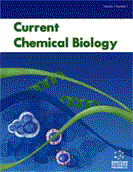Abstract
To develop drugs to kill cancer cells, we chemically synthesized a number of anti-cancer agents by adding different side chains to the core backbone of saponin. With the use of bioassay-guided methods, we found one agent that possessed a high cytotoxicity to a number of cancer cell lines. Interestingly, this compound was later found to be an active component of a tradition Chinese herb Paris polyphylla known as Polyphyllin D (PD) (diosgenyl α-L-rhamnopyranosyl- (1→2)-(β-L-ara-binofuranosyl-(1→4)-β-D-glucopyranoside). In China, the rhizome of Paris polyphylla (Chong Lou) has been used as a traditional Chinese medicine to treat a number of cancers including pancreas and liver cancers for a long time. Results from our laboratory demonstrate that PD is a potent anti-cancer agent that bypasses multi-drug resistance (MDR) and induces programmed cell death in R-HepG2 cells over-expressing P-glycoprotein (P-gp). In this paper, we reviewed the mechanisms how PD overcomes the MDR and exhibits a stronger cytotoxicity in the R-HepG2 than its parent line without P-gp through mitochondrial injury.
Keywords: Polyphyllin D, apoptosis, multi-drug resistance, mitochondria, R-HepG2
Current Chemical Biology
Title: Polyphyllin D - A Potential Anti-Cancer Agent to Kill Hepatocarcinoma Cells with Multi-Drug Resistance
Volume: 3 Issue: 1
Author(s): Tim T. Kwok, Siu K. Kong, Ming Li, Ho P. Ho, Bao Yu, Kwok P. Fung, Yick K. Suen, Judy Y.W. Chan, Macey M.S. Lee, Yan C. Li, Rebecca K.Y. Lee, Rose C.Y. Ong and Jenny Y.N. Cheung
Affiliation:
Keywords: Polyphyllin D, apoptosis, multi-drug resistance, mitochondria, R-HepG2
Abstract: To develop drugs to kill cancer cells, we chemically synthesized a number of anti-cancer agents by adding different side chains to the core backbone of saponin. With the use of bioassay-guided methods, we found one agent that possessed a high cytotoxicity to a number of cancer cell lines. Interestingly, this compound was later found to be an active component of a tradition Chinese herb Paris polyphylla known as Polyphyllin D (PD) (diosgenyl α-L-rhamnopyranosyl- (1→2)-(β-L-ara-binofuranosyl-(1→4)-β-D-glucopyranoside). In China, the rhizome of Paris polyphylla (Chong Lou) has been used as a traditional Chinese medicine to treat a number of cancers including pancreas and liver cancers for a long time. Results from our laboratory demonstrate that PD is a potent anti-cancer agent that bypasses multi-drug resistance (MDR) and induces programmed cell death in R-HepG2 cells over-expressing P-glycoprotein (P-gp). In this paper, we reviewed the mechanisms how PD overcomes the MDR and exhibits a stronger cytotoxicity in the R-HepG2 than its parent line without P-gp through mitochondrial injury.
Export Options
About this article
Cite this article as:
Kwok T. Tim, Kong K. Siu, Li Ming, Ho P. Ho, Yu Bao, Fung P. Kwok, Suen K. Yick, Chan Y.W. Judy, Lee M.S. Macey, Li C. Yan, Lee K.Y. Rebecca, Ong C.Y. Rose and Cheung Y.N. Jenny, Polyphyllin D - A Potential Anti-Cancer Agent to Kill Hepatocarcinoma Cells with Multi-Drug Resistance, Current Chemical Biology 2009; 3 (1) . https://dx.doi.org/10.2174/2212796810903010089
| DOI https://dx.doi.org/10.2174/2212796810903010089 |
Print ISSN 2212-7968 |
| Publisher Name Bentham Science Publisher |
Online ISSN 1872-3136 |
 23
23
- Author Guidelines
- Bentham Author Support Services (BASS)
- Graphical Abstracts
- Fabricating and Stating False Information
- Research Misconduct
- Post Publication Discussions and Corrections
- Publishing Ethics and Rectitude
- Increase Visibility of Your Article
- Archiving Policies
- Peer Review Workflow
- Order Your Article Before Print
- Promote Your Article
- Manuscript Transfer Facility
- Editorial Policies
- Allegations from Whistleblowers
- Announcements
Related Articles
-
A Combination of Two Antioxidants (An SOD Mimic and Ascorbate) Produces a Pro-Oxidative Effect Forcing Escherichia coli to Adapt Via Induction of oxyR Regulon
Anti-Cancer Agents in Medicinal Chemistry Computer Aided Drug Design: Success and Limitations
Current Pharmaceutical Design Acute and Sub-chronic Toxicity Analyses of Hot-Water Extract of Isaria japonica from Silkworm (Bombyx mori) Pupae
Current Traditional Medicine Enasidenib: First Mutant IDH2 Inhibitor for the Treatment of Refractory and Relapsed Acute Myeloid Leukemia
Anti-Cancer Agents in Medicinal Chemistry Nitric Oxide in Cancer Therapeutics: Interaction with Cytotoxic Chemotherapy
Current Pharmaceutical Design Decreasing the Metastatic Potential in Cancers - Targeting the Heparan Sulfate Proteoglycans
Current Drug Targets Relevance of the Deletion Polymorphisms of the Glutathione S-Transferases GSTT1 and GSTM1 in Pharmacology and Toxicology
Current Drug Metabolism Anti-Apoptotic Mechanisms of Drug Resistance in Cancer
Current Cancer Drug Targets Glioblastoma Multiforme and its Cell Interruption
Current Cancer Therapy Reviews A Comparison of the Inhibitory Effects of Anti-Cancer Drugs on Thioredoxin Reductase and Glutathione S-Transferase in Rat Liver
Anti-Cancer Agents in Medicinal Chemistry Synthesis and Biological Activity of Quinoxalone Derivatives as BRD4 Bromodomain Inhibitors
Letters in Drug Design & Discovery Protein Tyrosine Phosphatases: Strategies for Distinguishing Proteins in a Family Containing Multiple Drug Targets and Anti-Targets
Current Pharmaceutical Design Targeting Cyclooxygenase-2 in Hematological Malignancies: Rationale and Promise
Current Pharmaceutical Design Genetically Modified Cellular Vaccines for Therapy of Human Papilloma Virus Type 16 (HPV 16)-Associated Tumours
Current Cancer Drug Targets Spongiane Diterpenoids
Current Bioactive Compounds Dendrimers in Cancer Therapeutics and Diagnosis
Current Drug Metabolism Anti-Cancer Efficacy of Intravenously Administered Tumor- Targeted Vesicles Entrapping Tocotrienol
Pharmaceutical Nanotechnology Wnt Signaling in Liver Cancer
Current Drug Targets The Regulation of Differentiation of Mesenchymal Stem-cells into Skeletal Muscle: A Look at Signalling Molecules Involved in Myogenesis
Current Stem Cell Research & Therapy High-density Lipoprotein, Vascular Risk, Cancer and Infection: A Case of Quantity and Quality?
Current Medicinal Chemistry

















.jpeg)








